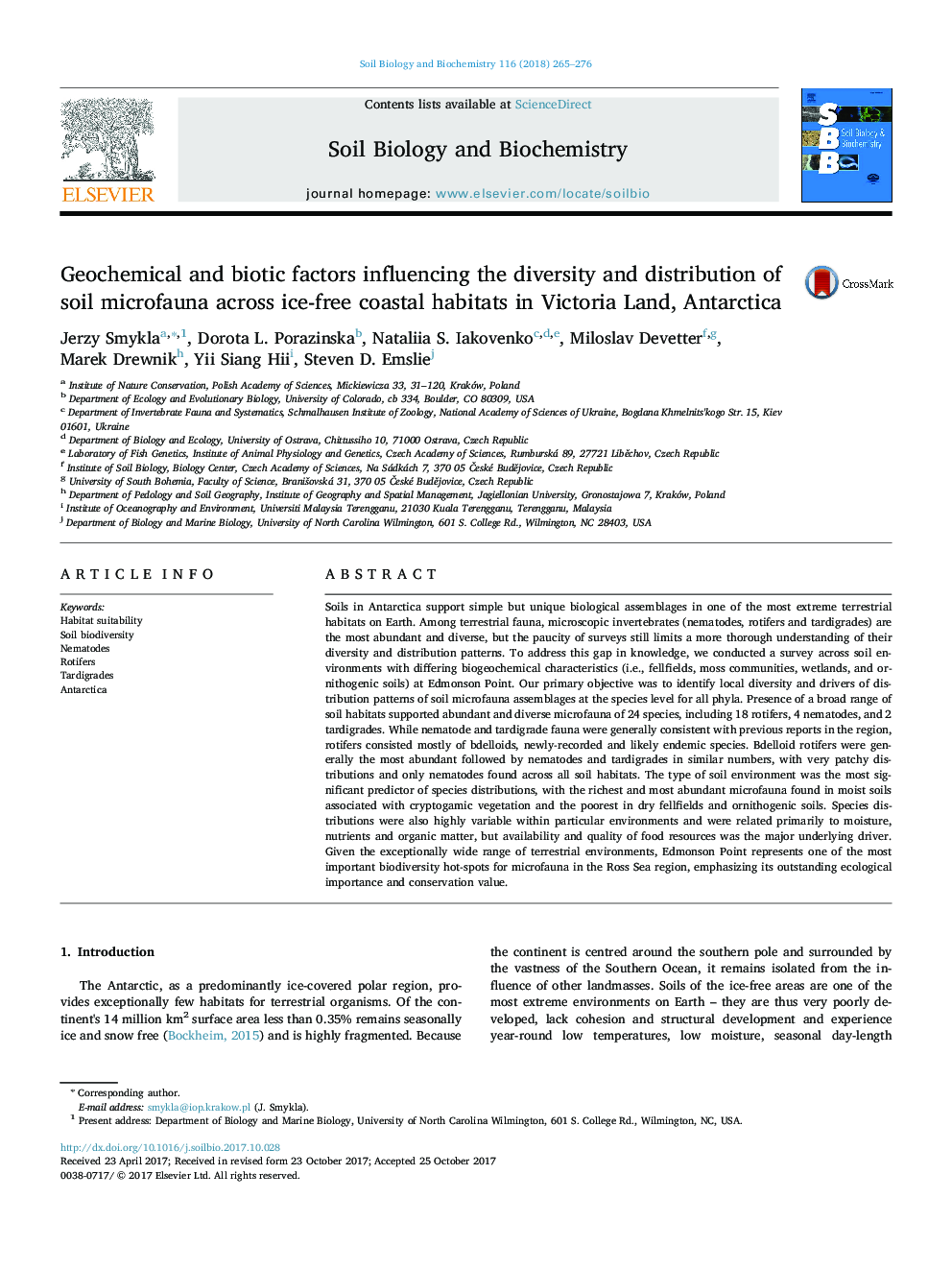| Article ID | Journal | Published Year | Pages | File Type |
|---|---|---|---|---|
| 8363145 | Soil Biology and Biochemistry | 2018 | 12 Pages |
Abstract
Soils in Antarctica support simple but unique biological assemblages in one of the most extreme terrestrial habitats on Earth. Among terrestrial fauna, microscopic invertebrates (nematodes, rotifers and tardigrades) are the most abundant and diverse, but the paucity of surveys still limits a more thorough understanding of their diversity and distribution patterns. To address this gap in knowledge, we conducted a survey across soil environments with differing biogeochemical characteristics (i.e., fellfields, moss communities, wetlands, and ornithogenic soils) at Edmonson Point. Our primary objective was to identify local diversity and drivers of distribution patterns of soil microfauna assemblages at the species level for all phyla. Presence of a broad range of soil habitats supported abundant and diverse microfauna of 24 species, including 18 rotifers, 4 nematodes, and 2 tardigrades. While nematode and tardigrade fauna were generally consistent with previous reports in the region, rotifers consisted mostly of bdelloids, newly-recorded and likely endemic species. Bdelloid rotifers were generally the most abundant followed by nematodes and tardigrades in similar numbers, with very patchy distributions and only nematodes found across all soil habitats. The type of soil environment was the most significant predictor of species distributions, with the richest and most abundant microfauna found in moist soils associated with cryptogamic vegetation and the poorest in dry fellfields and ornithogenic soils. Species distributions were also highly variable within particular environments and were related primarily to moisture, nutrients and organic matter, but availability and quality of food resources was the major underlying driver. Given the exceptionally wide range of terrestrial environments, Edmonson Point represents one of the most important biodiversity hot-spots for microfauna in the Ross Sea region, emphasizing its outstanding ecological importance and conservation value.
Related Topics
Life Sciences
Agricultural and Biological Sciences
Soil Science
Authors
Jerzy Smykla, Dorota L. Porazinska, Nataliia S. Iakovenko, Miloslav Devetter, Marek Drewnik, Yii Siang Hii, Steven D. Emslie,
